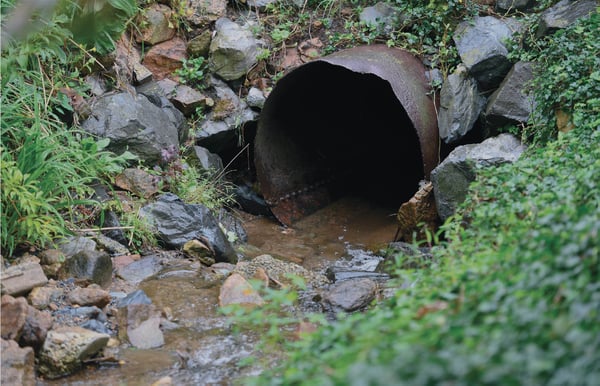Why Your County Needs Pipes, Culverts, and Ditches
These staples of flood management offer protection when utilized correctly
It’s common sense that as floods increase in intensity and frequency, building systems that direct and distribute stormwater become more and more necessary. These drainage systems serve an integral role in keeping the community safe, and projects like pipes, culverts, and ditches are a key part of any comprehensive flood protection plan.

Credit: Getty Images / MediaNews Group/Reading Eagle via Getty Images
The Takeaway
An effective stormwater drainage system relies on a network of components, including pipes, ditches, and culverts. Counties need up-to-date, comprehensive drainage systems to handle wetter rainstorms and stronger flood events. Pipes, ditches, and culverts provide long-lasting and effective flood solutions.
How they work: Pipes, culverts, and ditches collect floodwater that runs off impervious surfaces, like roads and sidewalks.
-
Drainage pipes move floodwater that has been collected by drains and sewers through an underground system that redirects water into facilities for storing excess water, like stormwater ponds, or directly to outlets like infiltration basins, rivers, lakes, streams, and the ocean.
-
Culverts are a type of drainage pipe or channel built into roads, railroads, and bridges to give an opening underneath the surface for water to flow.
-
Drainage ditches, often found on roadsides, provide a nearby, safe location for stormwater to go. Open ditches may work even better than drainage pipes because they have more storage capacity and allow the water to flow at more natural speeds, rather than the accelerated rate created by drainage pipes.
Why you need them: All three help to effectively transport floodwater away from neighborhoods and can protect homes, vehicles, and lawns.
Drainage Pipes
Move floodwater that has been collected by drains and sewers through an underground system that redirects water into facilities for storing excess water
Culverts
A type of drainage pipe or channel built into roads, railroads, or bridges to give an opening underneath the surface for water flow
Ditches
Often found on roadsides, they provide a nearby, safe location for stormwater to go
Why your county needs them: Pipes, culverts, and ditches each provide long-term solutions to fight flooding. Some plastic and clay pipes can last up to 100 years, much longer than other flood solutions like beach renourishment or seawalls. Steel or concrete culverts boast long lifespans as well at up to 75 and 100 years, respectively. Drainage ditches cost the least and potentially offer the longest lifespan, assuming regular maintenance and cleaning.
Take action: Your county likely already has a stormwater system in place that features pipes, culverts, and ditches, however, most were built a long time ago and need to be bigger to adequately handle present-day levels of rainfall and flooding. Many current outfall pipes also sit too low for rising sea levels. New roads and bridges should include culverts below if water regularly accumulates around them.
-
Yes, but: Elected officials may point out the relatively high cost of pipe and culvert projects, and the maintenance required to keep ditches effective. But as more common and strong floods cost more and more money, these long-lasting solutions could save taxpayers and the county money over time.
-
What experts say: Cities like Boston are already thinking about heavier rainstorms and flooding that could overwhelm their drainage pipes.
“The pipes are designed to carry a certain capacity, and if the rain is coming so hard and so fast, they can't convey it fast enough,” Charlie Jewell, director of planning at the Boston Water and Sewer Commission, told WBUR. “Who would have thought about 60 inches of rain? That was just unprecedented.”
We are Flood Defenders
A non-profit amplifying the power of our members' voices to demand and receive better flood protection

